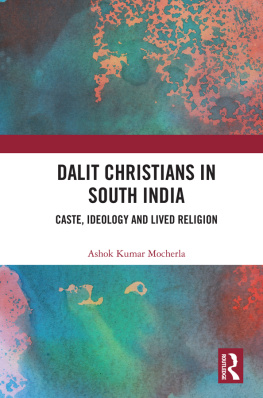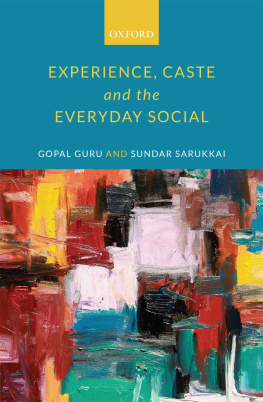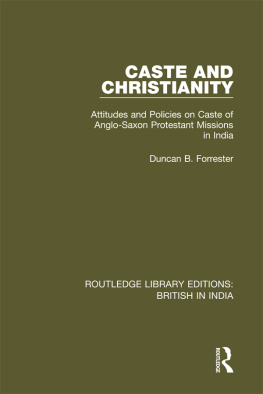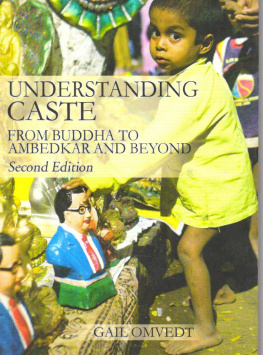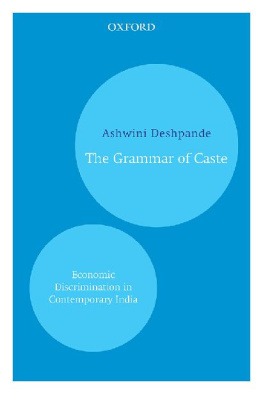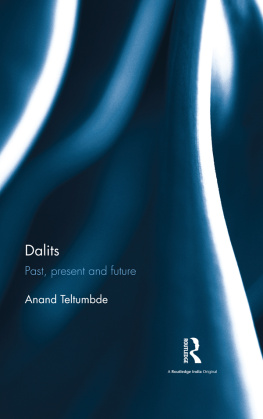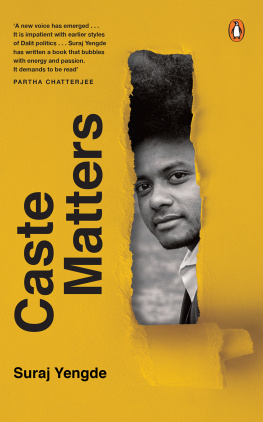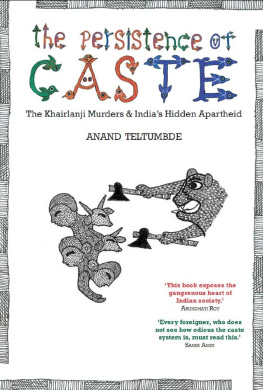For Dalit History Is Not Past but Present
Gopal Guru
The recent polemics on the question of societal prejudice seems to be revolving basically around three ideasobligation to history, social tragedy and intolerance. Thus, one can find these ideas in the recent protest of the writers emerging from the intensification of intolerance and the delayed response of the state to a politically motivated tragedy of a minority person from Dadri village in Uttar Pradesh. On the other side of the spectrum, those who objected to the writers protest seem to have chosen to use the history of social tragedy as the basis for launching their counter protest. Such opponents accused the writers of being selective in choosing Dadri as an incidence of intolerance. As a part of their particular understanding of the history of social tragedy, these opponents further accused the writers for not protesting against the intolerance that had led to the displacement of a large number of Pandits from the Kashmir Valley some decades ago. Thus, the assumption behind such an accusation was that the writers showed no obligation to history.
One may not deny social significance to any tragedy, including the dislocation of Pandits that happened in the past or has been happening in the present. The supporters of the displaced Pandits, however, do not realize that they commit the same mistake of which they accuse the protesting writers. The mistake is that they fail to historicize other forms of tragedies that coexist with the tragedy of the Pandits displacement. They too are guilty of being unconscious about the history of social tragedy that involves, for example, the Dalits in this country. As a corollary to this, one also needs to realize that, among other things, history is a thick field in which different kinds of tragedies not only coexist side by side but some of them also compete for public attentionby pushing the suffering of one social section ahead of the sufferings of other social sections. In such a marathon, it is interesting to note that those who are in sympathy with the Pandits seem to be treating the tragedy of the latter as the only concern around which everyone, including the writers, has to rally. In such an act of privileging, the ethics of historicizing receives a severe jolt. The major focus of this essay, therefore, is to historicize social tragedies so as to grasp different dimensions of such tragedies. It is also necessary to point out some serious implications that are internal to a skewed reading of the history of tragedies. Let us address the second point first.
It is possible to argue that the act of privileging a particular social tragedy, such as the displacement of Pandits, as the only context for defining intolerance has the following limitations. First, the counter protest against the writers seeks to privilege the displacement of Pandits as a kind of spectacular tragedy and hence such position by implication tends to ignore other tragedies. It may be because such tragedies are regular rather than spectacular. And, when this does not even occur to the opponents, Dalit tragedies have to wait for the social attention of these historically sensitive supporters of the Pandits. In such a reading, social history tends to move ahead primarily through the suffering of the privileged sections of society. Second, a particular reading of tragedy does not tell us whether the tragic experience of displacement has led the Pandits to identify them with those who have been facing different kinds of displacement. For example, the supporters of Pandits do not tell us whether the experience of ghettoization has morally inspired the Pandits to make common cause with Dalits as another displaced and despised social group. Instead, they seem to be using the dislocation of Kashmiri Pandits as a moral stick with which to beat the protesting writers.
Ironically, displacement of Dalits is not merely a physical or territorial dislocation, neither is it a loss of social and economic domination; it is, in fact, a colossal moral loss of their human existence. The ideology of puritypollution which is the core of Brahmanism, forces Dalits to carry with them all the time a morally degrading meaning, even if some of them have moved out of defiling jobs such as scavenging and other sanitary works. Those Dalits who still find themselves chained to the obnoxious job of manual scavenging and ragpicking continue to remain repulsive objects of intolerance. The touchable caste pushes Dalits first into degraded/inhuman forms of jobs then uses the same dislocation and stigmatizes them. Thus the upper castes invent justification for their intolerance of Dalits.
This burden of stigma remains attached to Dalits across time and space. The ideology of Brahmanism thus turns Dalits into a walking carcass or mobile dirt, and their colonies into stigmatized ghettos that look almost similar to the apartheid that existed in South Africa. Yet, in the privileged imagination of the film stars who are opposing the writers, social existence that has been reduced to repulsive wretchedness does not have the moral calibre that could help foreground intolerance.
The intolerant attitude adopted by the upper castes towards Dalits is morally vacuous in two major senses. First, those whose attitude of intolerance renders the Dalit untouchable or even unseeable, just because the latter deal with human dirt, conveniently forget that they themselves are the source of such dirt. Upper-caste intolerance, thus, inflicts civilizational violence against Dalits. Secondly, those who push Dalits out of the civilizational sphere do not take the responsibility of seeking the exclusion of Dalits from human interaction. On ethical grounds, the attitude of intolerance associated with the touchable castes is deeply problematic as it seeks to either minimize or cancel out the very existence of Dalits from social interaction. Narrowing of the ethical sphere to which human interaction is central, however, takes place through the speech act. The speech act that infests human communication with the language of humiliation suggests that Dalits are lower than human beings and hence not worthy of love and affection. Devastating expressions of intolerance, which for Dalits produce an everyday experience of humiliation and hence social death, however, do not merit the critical attention of those who see conspiracy behind the protest by writers.
On the other side of the spectrum, self-enlightened politicians from mainstream political parties would not demonstrate an intense kind of intolerance against Dalits. Let us understand this social generosity of politicians with the help of an incident that happened during the elections campaign in Kolhapur, Maharashtra, in the early 1980s. This particular political leader, who was campaigning in this slum, was confronted with a foul smell as soon as he entered the slum. When he found it difficult to tolerate it, he sprayed a very strong perfume on his socks in order to save himself from the stinking smell.
In the domain of electoral politics, even the political parties and some cultural organizations with Hindutva agenda have to be socially generous and show tolerance to the Dalits and their cultural symbols such as Ambedkar. The Hindutva parties, for example, have been making efforts since 1991 (Ambedkars birth centenary year) to carry the image (


